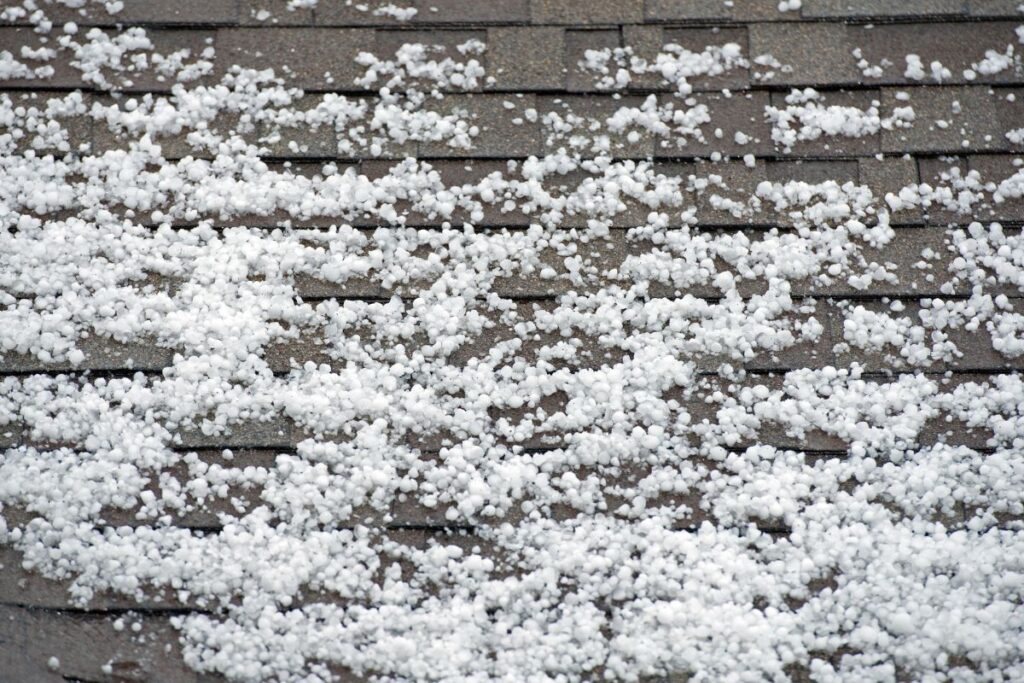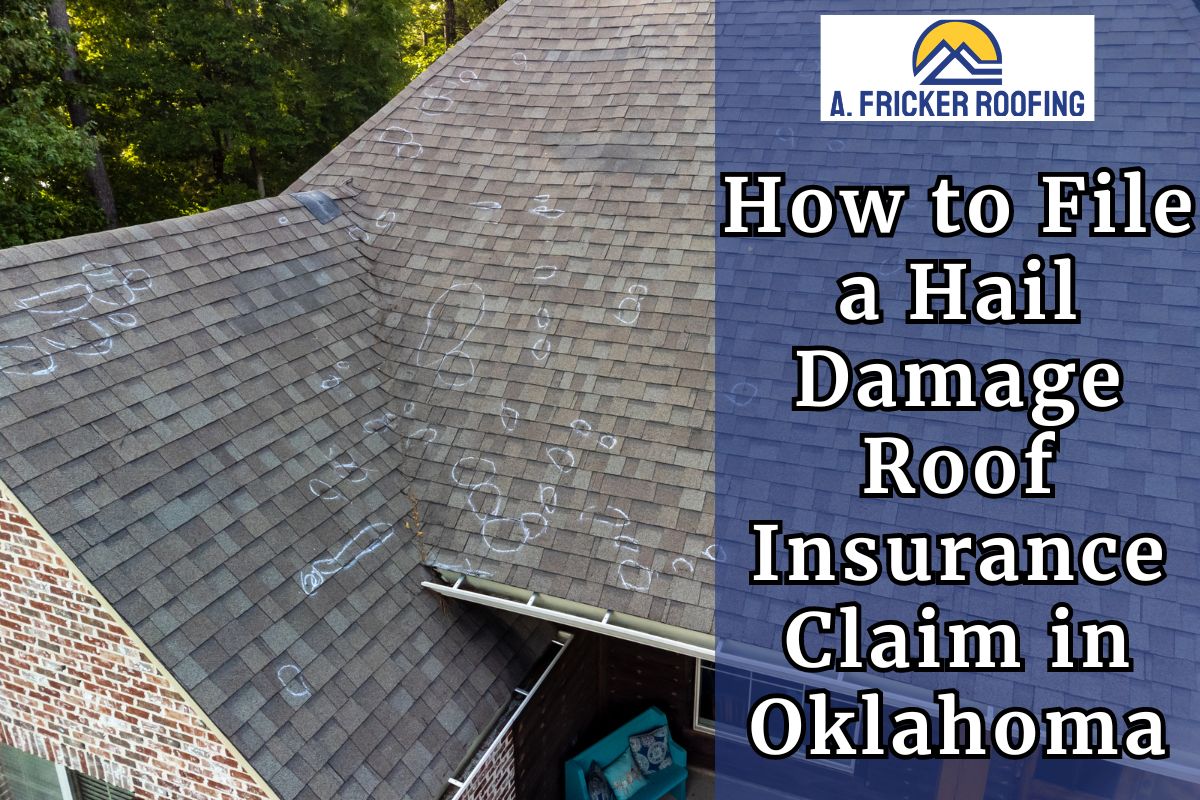Sometimes, the Oklahoma weather can take a toll on your roof, leaving it vulnerable to damage. The high winds, rain, and hail storms can negatively affect your roof and lead to financial headaches. But what if your roof damage is covered by insurance? Even if you have roof insurance, filing a claim can be a real struggle. It takes a lot of time and effort, and sometimes ends in a claim denial.
Therefore, every homeowner in Oklahoma should have a proper understanding of how to file a hail damage roof insurance claim. That’s why, as experienced roofers at A. Fricker Roofing and Waterproofing in Oklahoma, we are here to explain how to file a hail damage roof insurance claim that guarantees success. Read on to have a full understanding of roof hail damage insurance claims.
All About Roof Insurance Claims
Roof insurance claims can seem complicated, especially when you’re already stressed about damage to your home. However, understanding the basics can demystify the process. Roof insurance claims cover damage from unforeseen events, such as storms, hail, wind, and falling objects. Your policy is a contract that outlines what is and isn’t covered, so it’s essential to read it thoroughly.

Does Your Roof Insurance Cover Hail Damage?
Not all insurance policies are created equal. Some provide comprehensive coverage for hail damage, while others might have specific exclusions or limitations. Here’s what you need to know:
1. Types of Damage Covered
Your insurance policy will typically cover various types of hail damage, such as:
Shingle Bruising: Hail can cause dimples on shingles, potentially compromising their integrity.
Cracks or Splits: Larger hailstones can crack or split shingles, exposing the underlying layers of the roof.
Granule Loss: Hail can knock off the protective granules on shingles, leading to accelerated wear and tear.
Leaks: Hail damage can create openings that allow water to penetrate your roof, leading to leaks.
2. Deductibles and Limits
The chances are your policy will have a deductible—the amount you must pay out-of-pocket before insurance—and a coverage limit, which is the maximum amount your insurer will pay for a claim. Make sure you understand these numbers before filing a claim.
3. Check for Specific Hail Damage Clauses
It’s not uncommon for insurance policies to include specific clauses related to hail damage. These can affect how your claim is handled. Look for terms like “cosmetic damage exclusion,” which might exclude coverage for damage that doesn’t affect the roof’s functionality, or “roof surface loss,” which pertains to the materials used.
Whether To File The Insurance Claim or Not
Before jumping into the claims process, consider whether it makes sense to file a claim. Here are a few key factors you should consider:
1. Assess the Extent of the Damage
To decide whether or not to file a hail damage insurance claim, it is necessary to determine the extent of damage. Start by conducting a thorough inspection of your roof. While it’s best to hire a professional roofer for this, you can do a preliminary check yourself. Look for obvious signs of damage like dents, cracks, or missing shingles.
2. Consider Your Deductible
Compare the cost of repairs to your deductible. If the repair cost is slightly above your deductible, it might not be worth filing a claim, as it could lead to increased premiums.
Also Read: The Ultimate Guide To Tulsa Storm Chasers & How To Deal With Door To Door Roofing Scams
The Roadmap To Filing a Hail Damage Insurance Claim
If filling a hail damage roof insurance claim is right for your situation, follow these steps to ensure your claim is processed smoothly.
1. Document The Hail Damage
Before doing anything else, thoroughly document the damage and note the date and time of the storm. Take clear, high-resolution photos and videos from multiple angles. Include close-ups of damaged shingles, as well as wide shots of the entire roof. Also, it is beneficial to keep any relevant news reports of the storm as additional evidence.
2. Repair Your Roof Temporarily To Prevent Further Damage
Filing an insurance claim can be hectic and time-consuming. Therefore, it is better to make some temporary repairs while waiting for the claim to be processed. Cover any holes or leaks with a tarp or plywood. Keep receipts for any materials or services, as these can be included in your claim.
3. Contact Your Insurance Company
Before scheduling a meet-up with your insurer, gather all necessary information: your policy number, a summary of the damage, and your documentation. This will streamline the process and ensure you’re prepared to answer any questions. After you have documented everything, call your insurer as soon as possible to avoid any delays or complications.
4. File The Insurance Claim
a. Provide Detailed Information
When filing your claim, provide as much detail as possible. Describe the extent of the damage, the date and time of the hailstorm, and any temporary repairs you’ve made. This may increase the chance of getting your roof repairs covered.
b. Attach Documentation and Evidence
Submit all your documentation and evidence with your claim. This includes photos, videos, receipts for temporary repairs, and any other relevant information.
c. Schedule an Adjuster Inspection
After filing the insurance claim and submitting all the documents, your insurance company will likely send an adjuster to inspect the damage. During the inspection, be present to answer questions and ensure the adjuster sees all areas of damage.
5. Work With The Insurance Adjuster
In the roof insurance claim process, the adjuster’s report plays a crucial role. You must be cooperative and provide any additional information they need.
Also Read: How To Hire A Roofing Company For Storm Damage Roof Replacement Service
What If The Insurance Company Denies Your Claim?
Depending on their findings, adjusters may deny your claim. If you disagree with their assessment, don’t hesitate to seek a second opinion from a roofing professional.
a. Request a Detailed Explanation
If your claim is denied, request a detailed explanation in writing. Understanding the reasons behind the denial can help you address any issues.
b. File an Appeal
If your insurance company has an appeals process, it can be an advantage for you. If you are confident about your findings and believe that your roof repairs should be covered for the underlying damages, gather additional evidence or documentation that supports your claim and submit it with your appeal.
Work With Reputable Roofing Contractors In Oklahoma
Filling a hail damage roof insurance claim isn’t hassle-free, it requires proper documentation and reporting to the adjuster to ensure coverage. After dealing with many roof insurance companies, we can tell you that improper documentation and reporting are some of the most common reasons homeowners fail to get insurance coverage for their hail damaged roof.
We want to help you.
The expert roofers at A. Fricker Roofing and Waterproofing in Tulsa, Oklahoma, will work with you to get the full benefit of your roof insurance claim. Save time, effort, and money, and contact our experienced roofers today. We will help you file an insurance claim properly so you get the benefits you deserve. Call us today at (918) 402-7167 and talk with one of our experts.

